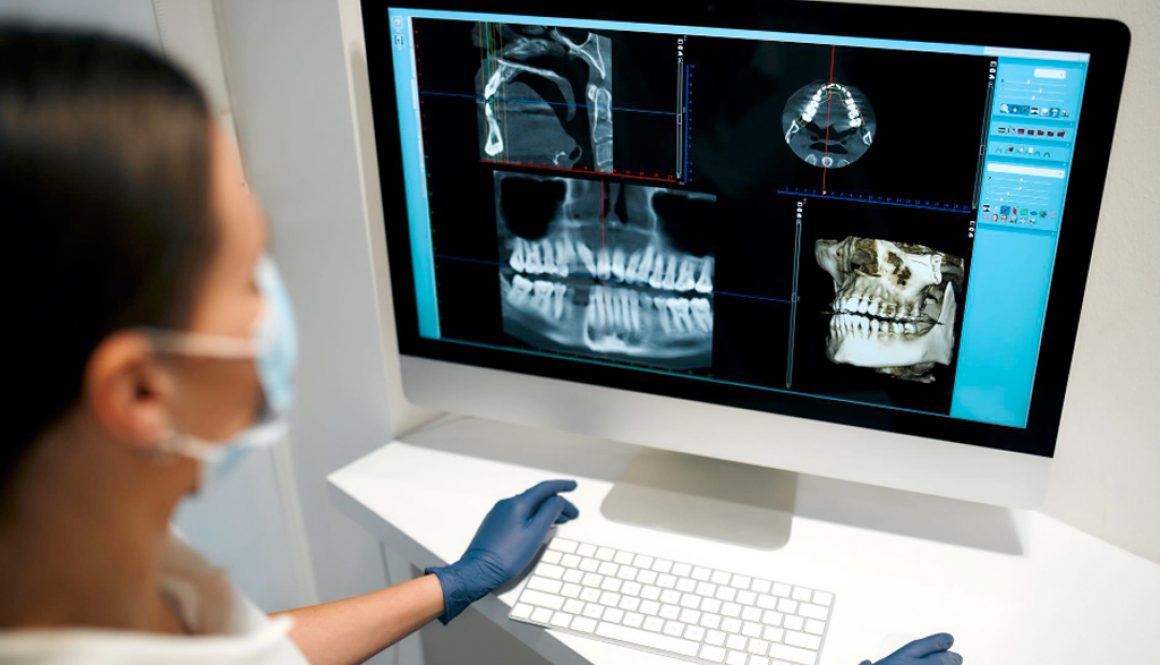The Importance of Digital Imagery in Dentistry
Blog
The Importance of Digital Imagery in Dentistry
With the continuous advancement of technology, the dentistry field has also experienced significant improvements, including using digital imagery. This blog post will explore the importance of digital imagery in dentistry and its impact on patient care.
Introduction:
The world of dentistry has come a long way since the days of rudimentary tools and a limited understanding of oral health. As we embrace the digital age, dental professionals have also integrated technology into their practices to offer patients better care and enhanced experiences. One such technology that has become indispensable in modern dentistry is digital imagery. From digital x-rays to intraoral cameras, these advancements have revolutionized how dentists diagnose, treat, and educate their patients. This blog post will delve into the importance of digital imagery in dentistry and how it has transformed the field.
The Rise of Digital X-Rays:
One of the most significant advancements in dental technology is the development of digital x-rays. Unlike traditional film-based x-rays, digital x-rays produce detailed images of a patient’s teeth and jaw in seconds. The photos are then stored electronically, making them easy to access, share, and analyze.
Digital x-rays offer numerous benefits over their traditional counterparts:
- Reduced Radiation Exposure: Digital x-rays emit up to 90% less radiation than film-based x-rays, making them a safer option for patients and dental professionals.
- Enhanced Image Quality: Digital x-rays produce high-resolution images, which allow dentists to spot even the most minor issues, such as early-stage cavities and fractures, improving the chances of early intervention and successful treatment.
- Faster Results: Digital x-rays provide instant results, enabling dentists to diagnose and treat patients more efficiently. This saves time and reduces the anxiety often associated with waiting for test results.
- Environmentally Friendly: Digital x-rays eliminate the need for toxic chemicals used in developing traditional film-based x-rays, making them an eco-friendlier choice.
Intraoral Cameras:
Another crucial aspect of digital imagery in dentistry is the intraoral camera. This small, pen-sized device has a tiny camera that allows dentists to take high-resolution images of a patient’s teeth and oral structures. These images are then displayed on a monitor, providing dentists and patients with a clear view of the patient’s oral health.
The use of intraoral cameras has greatly benefited dentistry in the following ways:
- Improved Patient Education: Intraoral cameras give patients a visual understanding of their oral health, making comprehending their dental issues and treatment needs easier.
- Enhanced Diagnostics: The high-resolution images captured by intraoral cameras help dentists to diagnose dental problems with greater accuracy, leading to more effective treatment plans.
- Better Record Keeping: Digital images can be easily stored and retrieved, streamlining the process of maintaining patient records and improving the dental practice’s overall efficiency.
- Patient Comfort: Intraoral cameras allow for non-invasive imaging, making the process more comfortable for patients than traditional methods.
Cone Beam Computed Tomography (CBCT):
Cone beam computed tomography (CBCT) is a cutting-edge technology that generates 3D images of a patient’s dental structures, soft tissues, and nerves. This advanced imaging technique has become increasingly popular in recent years, primarily due to its ability to provide dentists with comprehensive and accurate information about a patient’s oral health.
CBCT has revolutionized dentistry in various ways:
- Precision in Treatment Planning: CBCT’s detailed 3D images enable dentists to plan treatments, such as dental implants and orthodontics, with greater precision and accuracy.
- Enhanced Diagnosis: The 3D images generated by CBCT allow dentists to identify and diagnose complex dental problems, such as impacted teeth, TMJ disorders, and bone abnormalities, that may not be visible in traditional 2D x-rays.
- Reduced Need for Invasive Procedures: CBCT’s non-invasive imaging capabilities often eliminate the need for exploratory surgery, making the diagnostic process less invasive and more comfortable for patients.
- Improved Collaboration: The digital nature of CBCT images enables dentists to easily share information with other dental professionals, fostering collaboration and ensuring that patients receive the best possible care.
Conclusion:
Digital imagery has undoubtedly become an essential component of modern dentistry. The use of digital x-rays, intraoral cameras, and cone beam computed tomography has revolutionized the way dentists diagnose, treat, and educate their patients. These advancements in technology have improved the overall efficiency of dental practices and greatly enhanced patient care.
By embracing digital imagery, dental professionals can provide safer, more accurate, and more comfortable patient treatment experiences. As technology continues to evolve, we can expect even more innovations in digital imagery to further revolutionize the field of dentistry, making it more accessible and effective for patients worldwide.
Thank you for reading this article, and check back frequently for other dental health articles. Should you have any questions, please contact Apple Tree Dental today!
Article compiled by Apple Tree Dental







